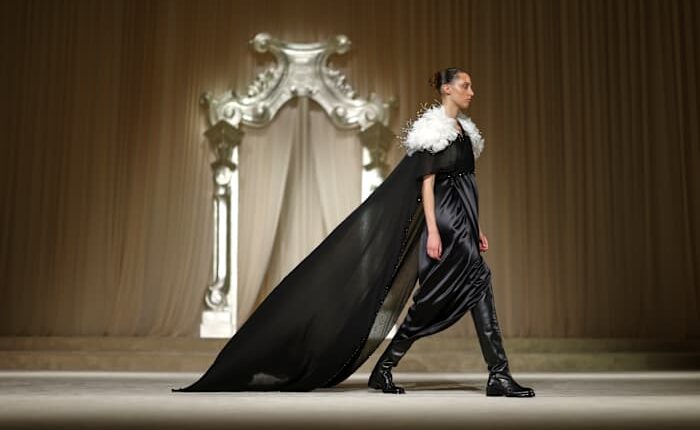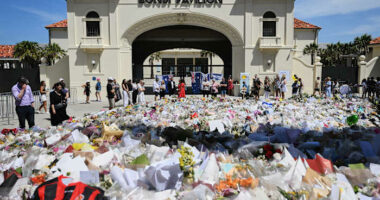Share this @internewscast.com

PARIS – Only Chanel would call its legendary Rue Cambon salon “too small” — then rebuild it, supersized, in a palace.
On Tuesday, as the fashion house celebrated the 110th anniversary of its haute couture, marking over a century since Coco Chanel’s transformative impact on women’s fashion, it recreated its workshop within the newly-renovated Grand Palais. This event turned an intimate setting into a grand spectacle during Paris Couture Week, immersing the show in a natural ambiance.
Chanel, renowned for its founder’s rejection of corsets and vision of luxury as a form of freedom, demonstrated just how extensively this influence reaches — from the cozy salons of 1915 to its current status as a global icon.
This was an impressive feat that only a few luxury giants could manage. As one front-row attendee noted, it may also serve as a glittering diversion as the fashion world anticipates the introduction of Chanel’s upcoming designer, Matthieu Blazy.
Penélope Cruz, Naomi Campbell and the house’s tightest VIP circle scaled gilded steps, sweating past marble and gold, to enter the reconstructed atelier. The set by Willo Perron was classic Chanel: intimate yet monumental, old world yet futuristic.
“It just felt special,” Campbell said, “like stepping into a memory and something completely new. There’s warmth, intimacy, nostalgia. Chanel can recreate anything, and it works.”
Chanel goes country
More drama unfolded on the runway. This was couture as nature fantasy, filtered through the Chanel prism. Menswear tailoring added swing to sculpted jackets and coatdresses, while mohair suits in deep greens and plums channeled autumn’s hush. Bouclé tweeds mimicked sheepskin; feathers and tweed created illusionary faux fur.
Gold-sprayed wheat ears — the house symbol of abundance — were everywhere: stitched into flounces, embroidered on necklines, set on every guest’s seat. The theme may have been country, but make no mistake: This was as close as Chanel gets to “roughing it.”
Technique dazzled at every turn: jewel-buttons, embroidered florals and a finale of lamé so luminous it mimicked sunlight on harvest fields. The studio team, holding the fort after Virginie Viard’s abrupt and unceremonious exit last year, anchored the show in classic codes but played with wit and lightness.
That obsessive handwork matters — not just for tradition, but for business. Chanel is fashion’s juggernaut: Privately held, the brand reported $18.7 billion in revenue for 2024, cementing its status as one of the world’s most powerful luxury houses. Couture may be the crown, but its influence drives global sales in fragrance, bags and jewelry, making it the envy of rivals.
New era for the luxury giant
Change is always looming at Chanel. For more than 30 years, Karl Lagerfeld transformed the brand from Parisian legend to pop phenomenon, staging ever-grander spectacles at the Grand Palais. After his death in 2019, Viard, his longtime deputy, guided Chanel into a softer, more discreet era.
Now the industry is holding its breath for Blazy, a Belgian talent with stints at Margiela, Celine and most recently Bottega Veneta, where he won fans for his blend of innovation and reverence for craft.
Campbell said of Blazy, whom she knows personally: “He’s focused, open-minded — he’ll bring something special.”
Tuesday’s show unfolded inside the Grand Palais’ newly restored Salon d’Honneur, its gold and stone revealed after a 600-million-euro, multi-year restoration co-funded by Chanel. It’s more than a venue; it’s an advertisement to the house’s power and commitment to Parisian heritage.
Copyright 2025 The Associated Press. All rights reserved. This material may not be published, broadcast, rewritten or redistributed without permission.











